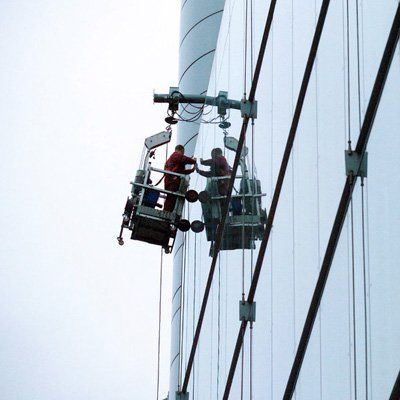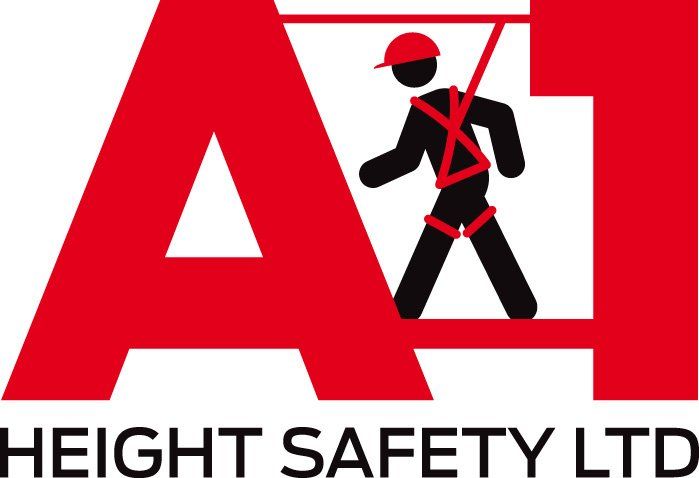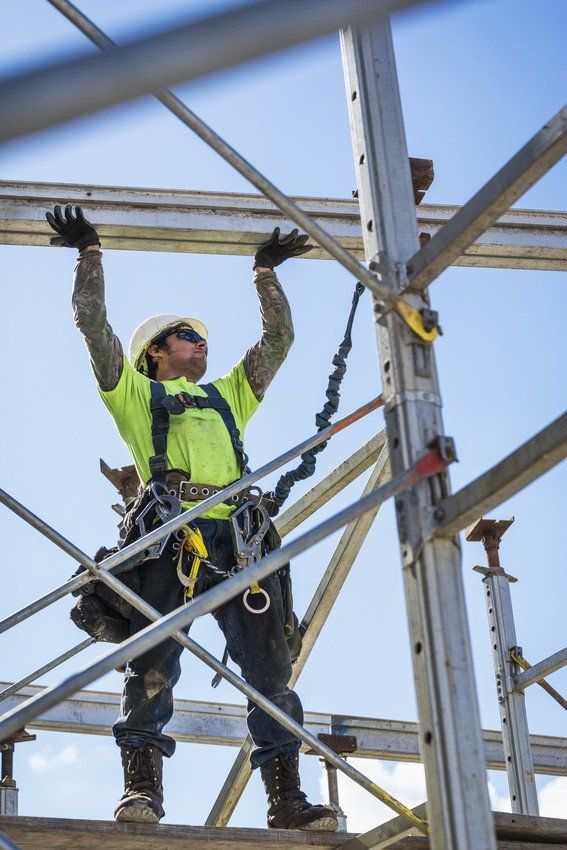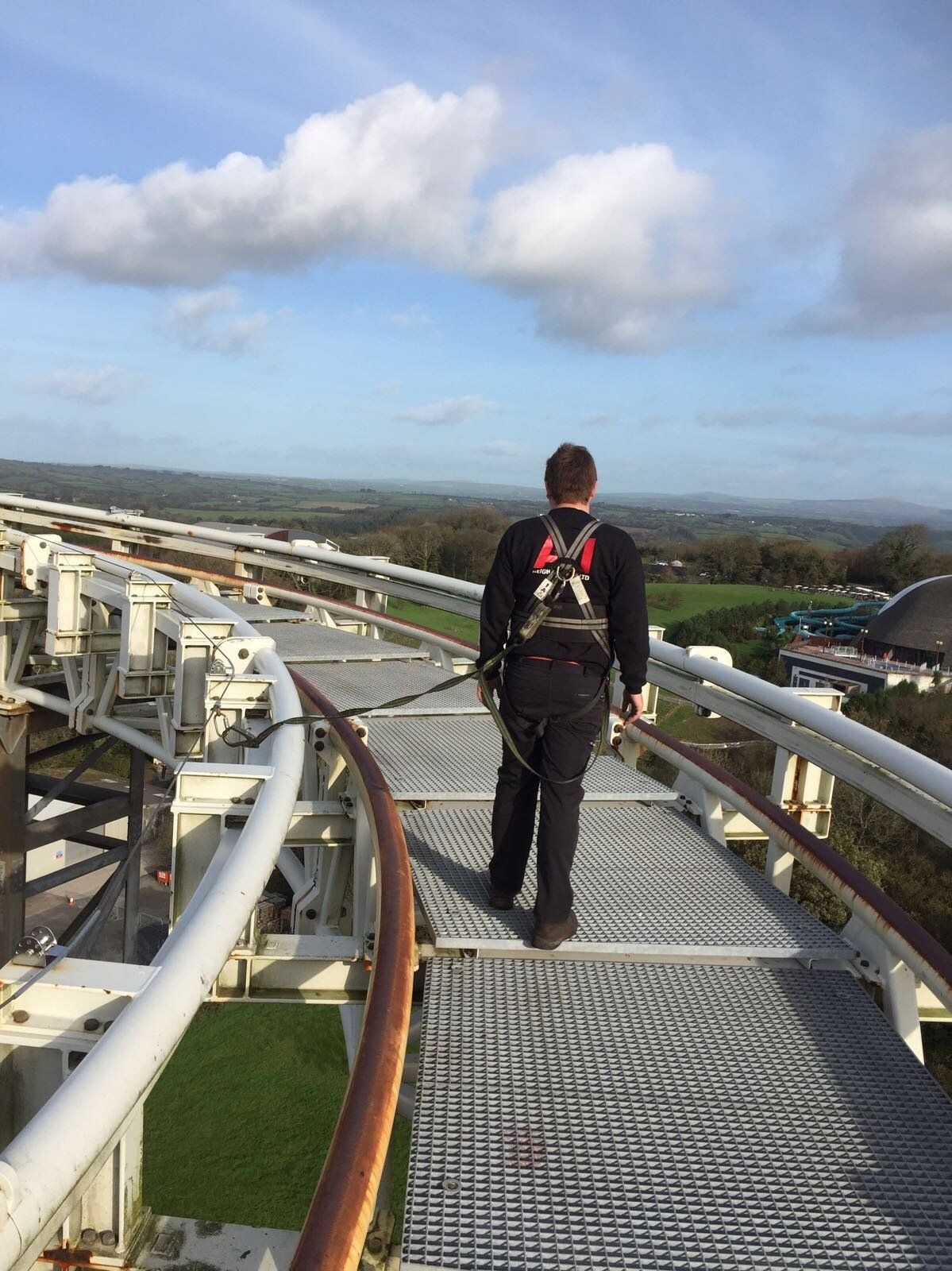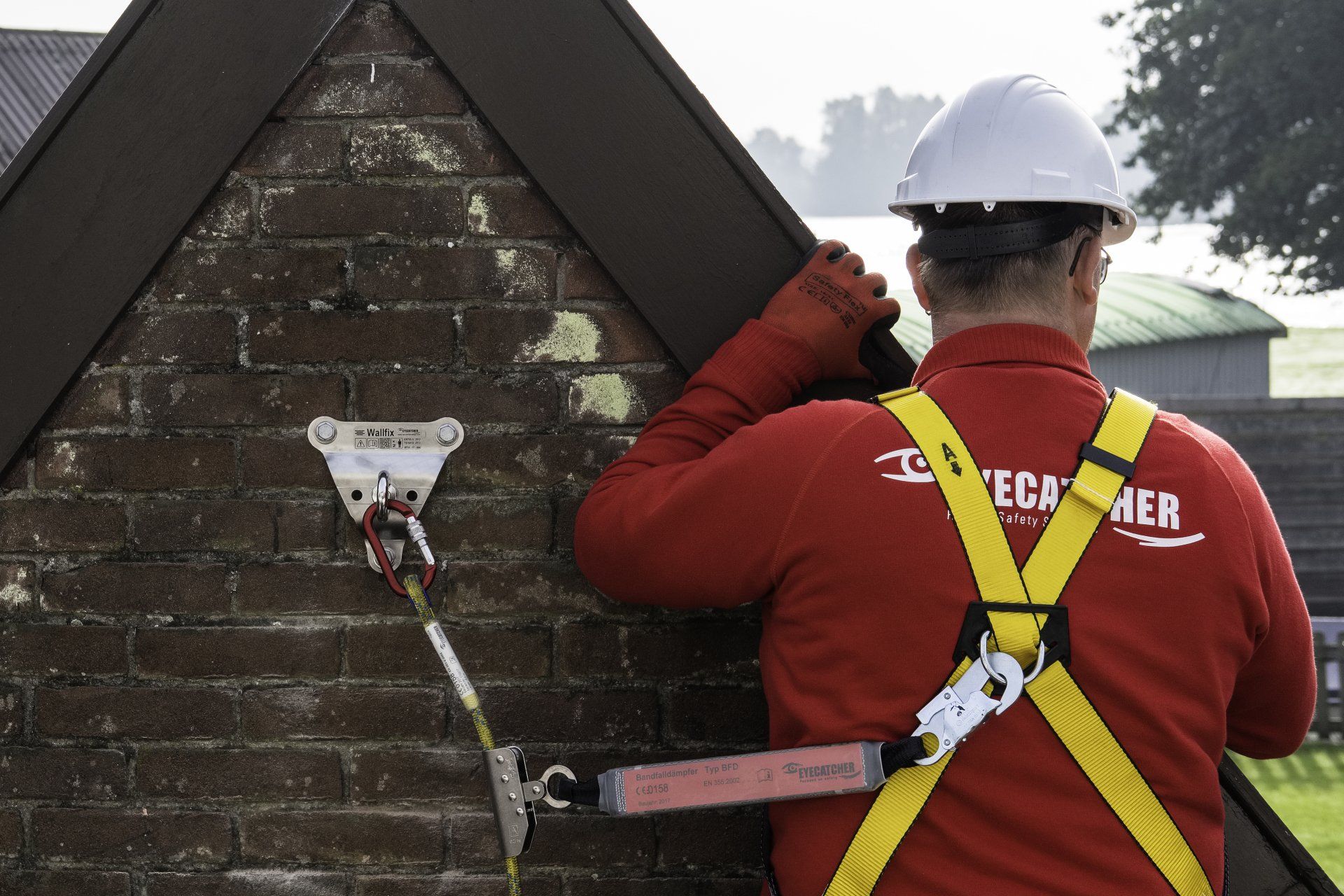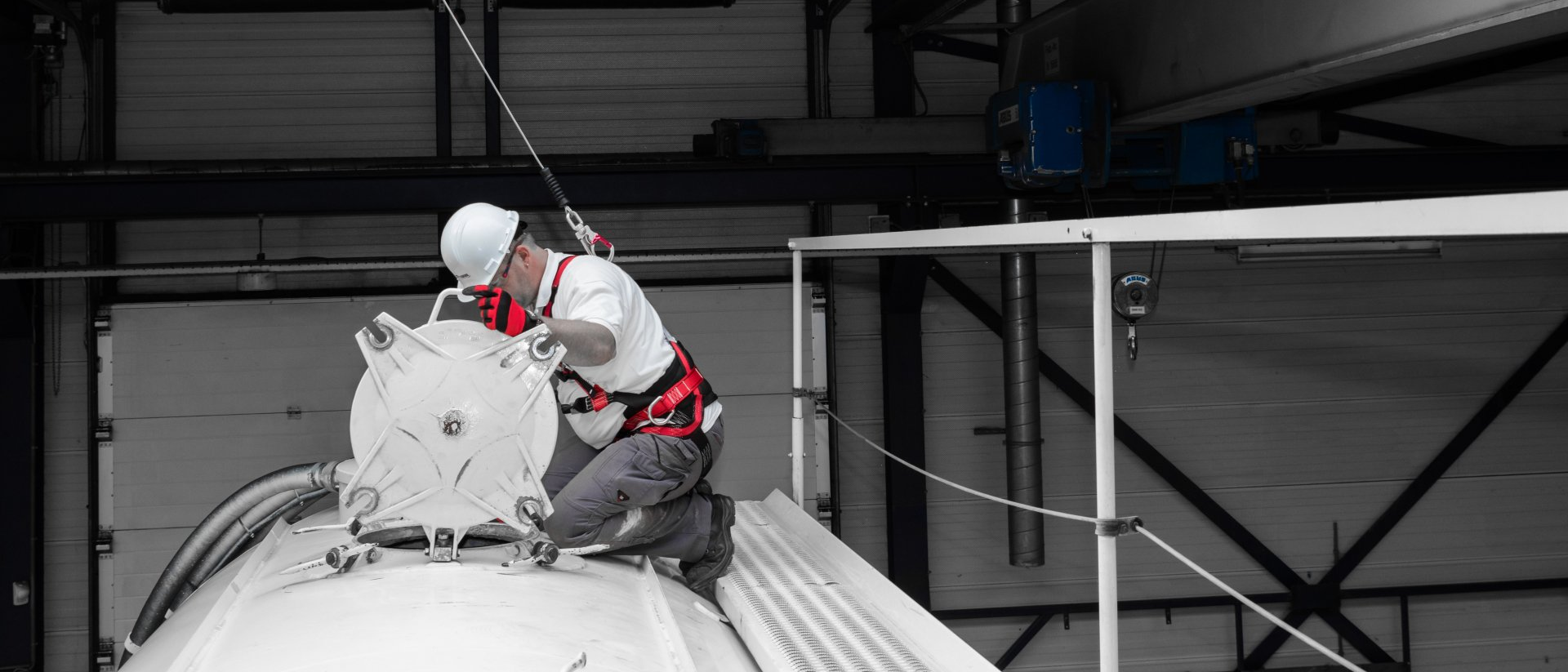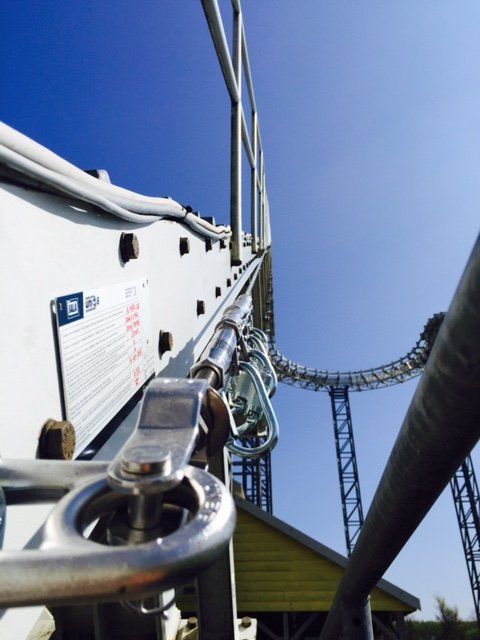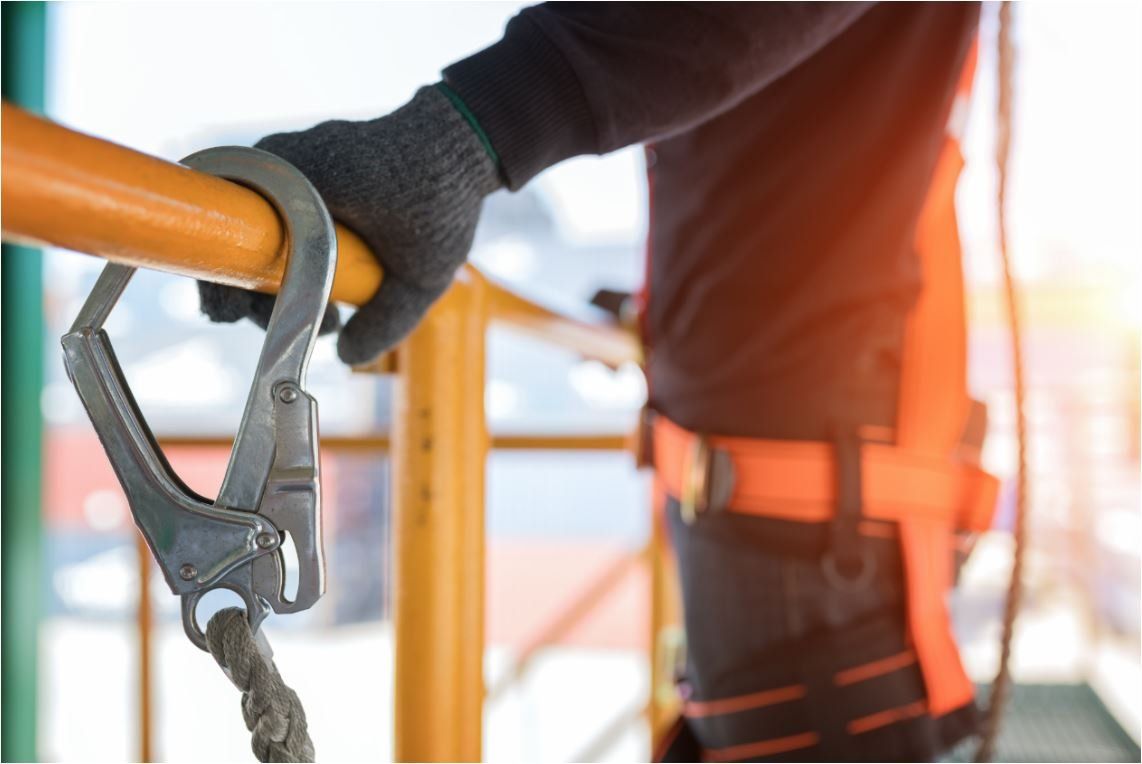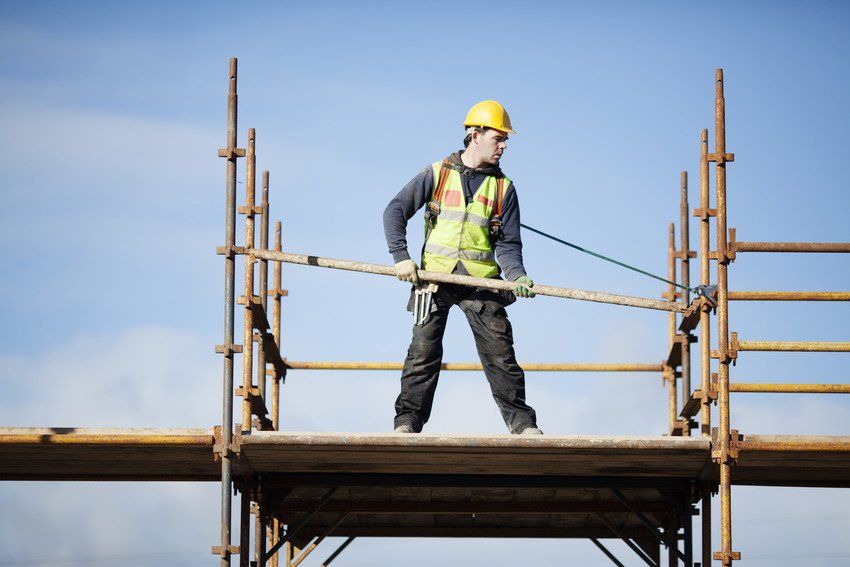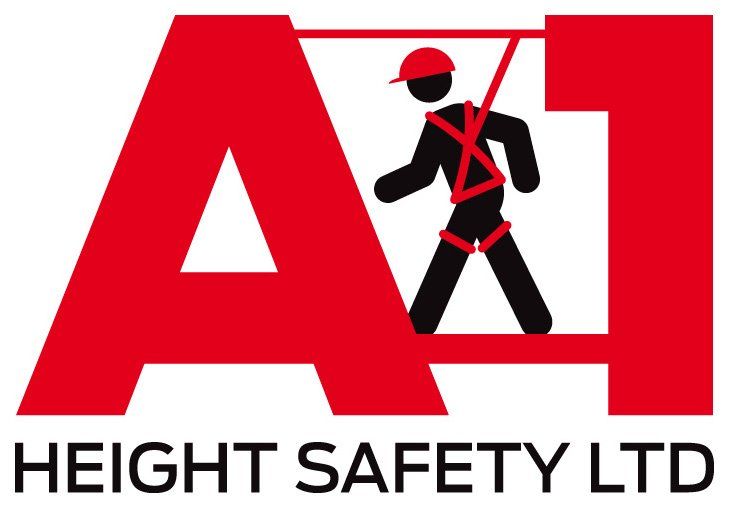Which Roof Safety Line Is Right For Your Facility?
The height safety system of choice for workspaces where people are working at height but require additional mobility are roof safety lines. You can get both horizontal and vertical lines that workers can attach themselves to, to protect or prevent them from falling. These systems are attached to a solid structure to ensure complete safety, and there are lines available at A1 Height Safety to suit a vast range of facilities. At all times our priority is to keep our customers safe at work, so we provide products to ensure that your business or operation always complies with up-to-date height safety legislations and standards.
Through a combination of expert knowledge and practical experience, we help our customers reduce risk and increase safety when working at height. Providing local support and installation services in order to meet the safety objectives of our clientele. From vertical lines and flat roof lines, to equipment suitable for walkway and overhead installation, read on to find out more about the roof safety lines which could enhance the safety of your facility and help you comply with that all important workplace legislation.
The Benefits Of Roof Safety Lines
Each year, some of the most prominent causes of fatal injuries in the workplace are due to people falling from height, especially rooftops. Safety lines are designed especially to protect the user from accidental falls. Fixable to almost any structure, as well as being discrete and cost-effective, safety lines can quite literally be the difference between life and death.
Personal fall protection is a different form of collective fall protection, such as railings, which are always classified as active and don’t require the individual to be trained in order to use them. Safety lines are similar to harnesses in that the user will need training to make sure they are used as they should be. When used correctly, safety lines offer the user continuous hands-free access for all aspects of roof maintenance. Whether working on a commercial or domestic property, these systems allow the worker to carry out necessary tasks while minimising all potential risks.
Vertical Safety Lines
Useful in situations where workers must climb up ladders or work on the side of buildings, as the name suggests, vertical safety lines are required in situations where individuals must be fixed parallel to a structure or building. Usually featuring a fall arrester, Vertical lifeline harnesses are connected via a vertically suspended flexible line.
Vertical fall protection systems can also regularly be located on masts, aerials and large towers, These are designed to protect the worker when accessing their work site, often during the time that the task is being carried out. The worker is connected to a cable or rail via a harness and lanyard and workers must undergo specific training on these systems before usage.
Horizontal Safety Lines
Horizontal safety lines are most practical when there is a need to fix workers to an over-head line, allowing the individual to move hands-free and unobstructed without risk of falling. For facilities where it would otherwise be difficult to install conventional height safety measures like handrails, or within locations where this type of protection isn’t enough. Horizontal safety lines consist of a steel cable track that runs along the roof, fixed in place at multiple anchor points. This ensures secure, hands-free horizontal movement at height with assurances that the employee is safe at all times.
Horizontal safety line systems are particularly practical as you are able to hook and unhook the system with ease, as well as unhook the runner without taking the protective lanyard off. A horizontal system can be put in place for virtually all types of roofs and structures, offering an aesthetically pleasing yet discrete safety system. This type of system is commonly found on rooftops and attached to cranes, either cable-based or rail-based. The level of user understanding which is required to safely use a horizontal lifeline depends on the positioning of the lifeline on the roof. A lifeline track that follows the outline of the roof requires limited user knowledge. This way, those who are responsible for the safety of the system are less dependent on workers using the system as they should be.
Roof Lifelines
A type of safety line which is crucial when you need to access flat and pitched roofs safely, A1 Height Safety produce safety lines specifically created for flat roof membrane structures, using mechanical fixings through the insulation down to the metal deck. The anchor system is installed during the time of the initial roofing construction, with components put in place with sealants to ensure waterproofing for both the system and the membrane underneath it. As one of the most popular measures within the working at heights industry, roof safety lines encompass any cable or linen system that secures a worker to a fixed structure to comply with health and safety standards.
As highly trained engineers, A1 Height Safety excel in the provision of height safety gear such as fall arrest systems and height safety lines. For any queries please contact us by phone, email or fill out our website contact form.
The Importance Of Rooftop Safety
When working from a height, safety is of course the most important factor regardless of the system that you’re working with. There are a few simple tips to keep in mind when working at height on a job. An initial risk assessment is crucial in preparing to work in a potentially dangerous situation, and is highly important when preparing for the work which will be taking place. Failing to prepare for these circumstances could be a very dangerous mistake to make. Correct personal protective equipment (PPE) should also be worn alongside the roof safety line most appropriate to the situation.
Owning the correct safety line isn’t an immediate problem-solver, with appropriate training also required to show individuals how this crucial equipment should be used. Training can ensure workers are aware of how to correctly use their safety equipment. It is absolutely essential that you use certified and approved equipment at all times, with A1 Height Safety placing an emphasis on quality, functionality, reliability and innovation.
A1 Height Safety: Roof Life Line And Roof Safety Line System Specialists
All systems should be inspected before each use, and common practice is to have your safety lines thoroughly tested and certified at least once a year, as there are many reasons why they may no longer be fit for use. Under the management of Stewart Linney, all our engineers are fully trained by Capital Safety and have had extensive training. We have invested extensively in equipment for the design, installation, testing and certification of height wire systems, fall arrest systems, safety line systems, harness anchor points and much more. For more information on the service we offer, please contact us today.
At A1 Height Safety, we’re proud to provide a
comprehensive range of fall arrest systems and fall protection products, including vertical, horizontal and flat roof safety lines. Our products are fully compliant solutions for structures of all types in all industries. Regardless of the service, we aim to deliver the highest standards of quality, training and support for our customers in relation to their height safety equipment. We are a firm believer in the personal approach, and make sure that we are in constant contact with clients and engineers at every stage of a contract. This strategy ensures that all parties are fully aware of progress at all times, and that the work will be completed quickly, efficiently and in the most cost effective way possible.
